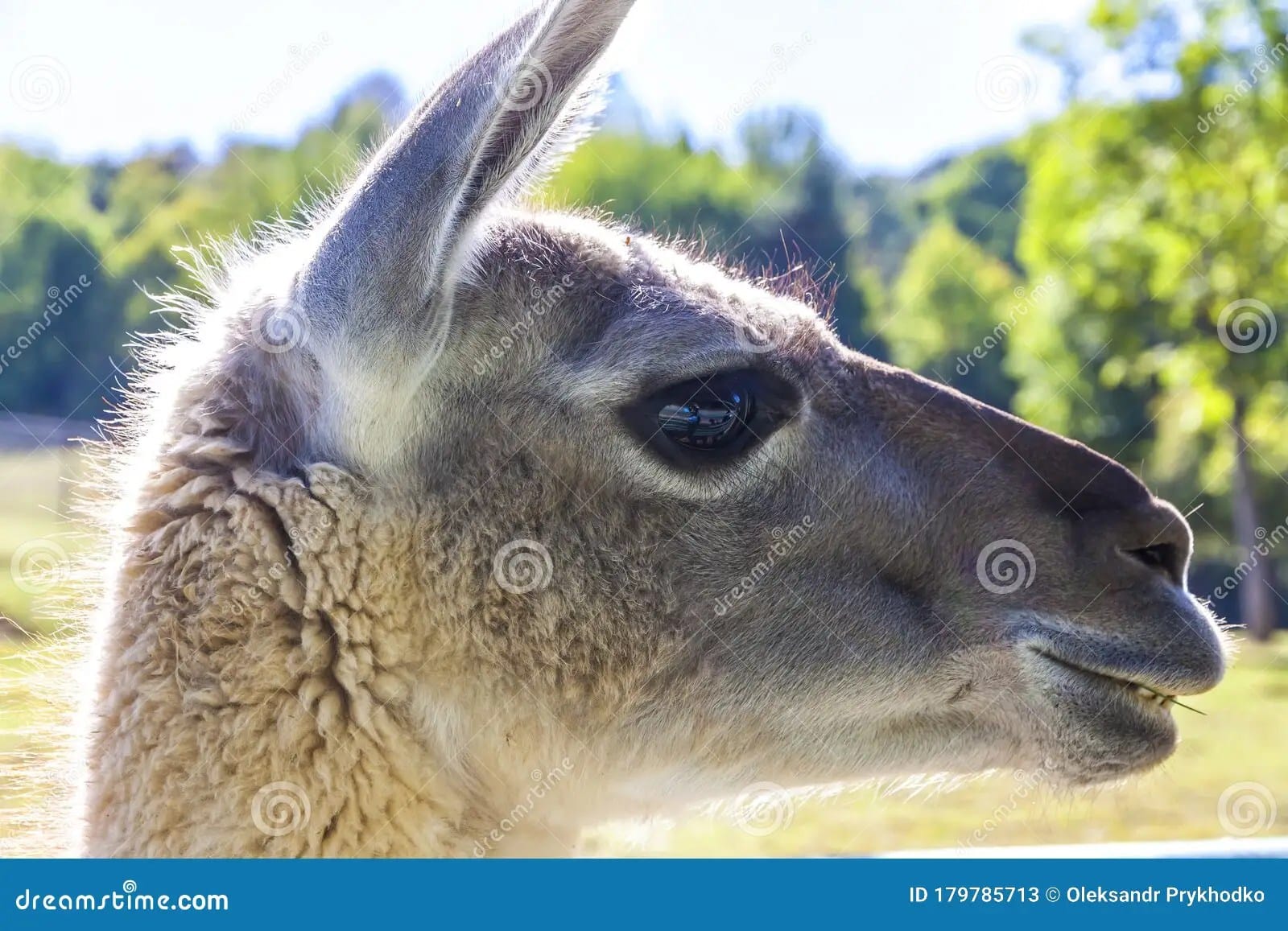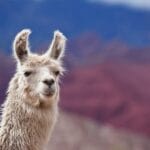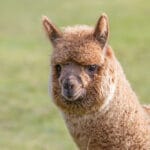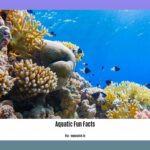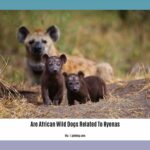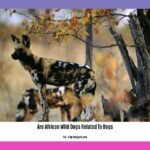Journey into the heart of South America to uncover the fascinating world of the guanaco, the wild ancestor of the llama. From the windswept Patagonian plains to the towering heights of the Andes Mountains, these remarkable creatures thrive in diverse and challenging environments. Discover their remarkable adaptations, intricate social behaviors, and the delicate balance they maintain within their ecosystems.
Guanaco: A Portrait of the Wild Llama Ancestor
Ever wondered where llamas come from? Meet the guanaco—the wild ancestor of our beloved llamas and alpacas! These incredible creatures, native to South America, play a crucial role in their ecosystems.
Unveiling the Guanaco’s Appearance and Habitat
While they bear a striking resemblance to llamas, guanacos are generally smaller, often described as the intermediary between llamas (the largest) and alpacas (the smallest) within the camelid family. Male guanacos typically stand taller and prouder than females, reaching heights of 3 to 4 feet at the shoulder and weighing a considerable 200 to 300 pounds. Their graceful long necks, legs built for speed, and reddish-brown woolly coats, offset by striking white underbellies, make them perfectly camouflaged for their surroundings.
Guanacos are highly adaptable and can be found in a variety of habitats throughout South America. They favor wide-open spaces like the high peaks of the Andes Mountains, the windswept plains of Patagonia, steppes, scrublands, and even mountainous regions. These incredible creatures have developed remarkable adaptations that allow them to survive in the thin air of high altitudes and withstand the often-frigid temperatures of the Patagonian plains.
Life in the Herd: Social Structure and Communication
Guanacos are highly social animals, living in structured herds led by a dominant male. These herds are far from silent; guanacos are surprisingly vocal! They communicate through a complex system of hums, alarm calls, and even distinctive body language. Their diet consists entirely of plants, with grasses, shrubs, and lichens forming the staple of their diet. Female guanacos give birth to a single offspring, affectionately called a “chulengo,” after a gestation period of approximately 11.5 months.
Challenges and Conservation Efforts
While guanacos are not currently classified as endangered, their populations have experienced concerning declines in certain regions. The primary threats they face include habitat loss due to overgrazing by livestock, competition with introduced herbivores, and unsustainable hunting practices.
Fortunately, ongoing conservation efforts aim to safeguard these magnificent creatures. These initiatives include the establishment of protected areas, like Patagonia National Park, where guanacos can roam freely, and the promotion of sustainable hunting practices to ensure the long-term viability of their populations. By involving local communities and raising awareness about the ecological and cultural importance of guanacos, conservationists strive to ensure their survival for generations to come.
The Guanaco: A Symbol of Resilience in the Andes
In the heart of the rugged Andes Mountains, the guanaco, a resilient relative of the llama, thrives against all odds. Their ability to survive in this harsh environment, characterized by high altitudes, frigid temperatures, and scarce vegetation, has made them a symbol of strength and perseverance for the indigenous peoples of the Andes, such as the Aymara and Quechua communities.
For these communities, the guanaco represents an unyielding spirit, a reflection of their own ability to adapt and overcome challenges. Like the guanaco, these communities have faced their own share of hardships, from extreme weather conditions to changing political landscapes. They see their own resilience mirrored in the guanaco’s ability to not merely survive but thrive in such a challenging environment.
This deep connection between the people and the guanaco is deeply woven into the fabric of Andean cultures. It is a relationship that extends beyond simple admiration for the animal’s hardiness; it is a spiritual connection. Ancient rituals, songs, and dances, all dedicated to honoring the guanaco, attest to this profound bond. In their beliefs, the guanaco acts as a messenger, a bridge between the physical world and the realm of spirits and ancestors.
The guanaco’s story resonates far beyond the Andes. In a world grappling with environmental challenges and cultural shifts, it serves as a powerful reminder of the importance of resilience, adaptation, and the interconnectedness of all living things.
Unveiling the Secrets of the Guanaco: A Journey into the Wild
High in the Andes Mountains, the guanaco, with its untamed spirit and remarkable capacity for survival, presents a captivating enigma that scientists are only beginning to unravel.
Adaptations: Keys to Survival in Extreme Environments
Guanacos are masters of adaptation, equipped with a suite of physical and physiological traits that allow them to flourish in one of the harshest environments on Earth. Their thick, woolly coats provide essential insulation against the frigid Andean temperatures, while their uniquely adapted digestive systems can extract nutrients from even the toughest and most fibrous plants. These adaptations are crucial for their survival in the vast, grassy plains of the Puna and the drier, more barren landscapes found at lower elevations.
Social Interactions and Complex Communication
Guanacos are highly social animals, forming herds that can range in size from a few individuals to over a hundred. These herds are typically led by a dominant male, with females and their young forming close-knit groups within the larger social structure. Their communication system is equally complex. The Andes reverberate with a chorus of guanaco vocalizations—a symphony of alarm calls warning of potential predators, mating calls, and a range of other sounds used to maintain cohesion within the herd.
The Guanaco’s Role as an Ecosystem Engineer
Guanacos play a vital role in maintaining the delicate balance of their Andean ecosystems. As herbivores, their grazing habits help to regulate plant growth, preventing any one species from dominating and promoting biodiversity. This, in turn, influences water availability, prevents soil erosion, and even mitigates the risk of wildfires by controlling the amount of flammable vegetation.
Guanacos and Humans: A Complex Relationship
Humans and guanacos share a long and intertwined history. Indigenous communities have long relied on these animals for essential resources like wool and meat, viewing them with reverence and incorporating them into their spiritual beliefs. However, the modern era has brought new challenges. Habitat destruction, overgrazing by livestock, and the looming threat of climate change have all put increasing pressure on guanaco populations.
A Call for Conservation
The need to protect guanacos and their fragile Andean habitat has never been greater. Establishing protected areas is crucial, but it is only one piece of the puzzle. Empowering local communities to become stewards of their own environments and fostering sustainable practices that benefit both people and wildlife are essential for long-term success.
The Guanaco’s Story: Survival Against the Odds in the High Andes
In the dramatic landscapes of the High Andes, where icy winds whip across vast, windswept plains and towering peaks pierce the sky, the guanaco stands as a testament to the power of adaptation and resilience. These remarkable creatures have not only carved out a niche for themselves in one of the harshest environments on Earth; they have come to define it.
Adaptations for a Life at the Top
The guanaco’s survival in this challenging landscape is a testament to their remarkable adaptations. Their thick, luxuriously soft coats, some of the warmest in the animal kingdom, provide essential insulation against the biting cold. Their digestive systems, marvels of evolutionary engineering, can efficiently break down the tough, often scarce vegetation that makes up their diet, extracting every last bit of nutrition.
Social Bonds and the Language of the Herd
Guanacos are not solitary creatures; they thrive in the company of their own kind. They form structured herds, typically led by a dominant male, with a clear social hierarchy ensuring order and cohesion. Communication is key to their survival. These herds are alive with a symphony of hums, whistles, and alarm calls, a complex language that allows them to warn each other of danger, signal their location, and maintain social bonds.
The Unsung Heroes of the Andes
Guanacos are far more than just survivors; they are the unsung heroes of the Andean ecosystem. Their grazing habits, far from being detrimental, actually help to maintain the delicate balance of this unique environment. They prevent the overgrowth of certain plant species, ensuring that there’s enough water and nutrients to go around. Their presence even helps to prevent wildfires by controlling the amount of dry, flammable material on the ground.
A Delicate Balance: Guanacos and Humans
However, the guanaco’s story is not without its challenges. For centuries, these creatures have shared their mountain home with humans, particularly the indigenous cultures of the Andes, who have long revered the guanaco for its wool, its meat, and its spiritual connection to the land. But the encroachment of human activities, including habitat destruction, overgrazing by livestock, and hunting, has taken a toll on guanaco populations.
A Call to Action: Protecting a Legacy
Conserving guanacos and their vital role in the High Andes is not just about protecting a species; it’s about preserving a way of life, a delicate ecological balance, and a cultural heritage that stretches back millennia.
Guanaco vs. Llama: Unveiling the Differences and Shared Ancestry
While guanacos and llamas share a common ancestor and a striking resemblance, these two camelids have embarked on distinct evolutionary journeys, leading to fascinating differences in their appearance, behavior, and ecological roles.
A Tale of Two Camelids: Distinguishing Features
Both guanacos and llamas bear the hallmarks of the camelid family—long necks, slender legs, and a captivating air of serenity. However, a closer look reveals subtle but significant differences. Guanacos, the wilder of the two, are typically smaller than their domesticated counterparts, weighing in at a respectable 200 to 300 pounds, compared to the llama’s more robust 280 to 440 pounds. Their coats, too, tell a tale of two lifestyles. Guanacos sport a more uniform reddish-brown coat, artfully offset by a white underbelly, providing excellent camouflage in their natural environment. Llamas, on the other hand, boast a dazzling array of colors, a testament to centuries of selective breeding by humans.
Wild at Heart vs. Domesticated Companions
Perhaps the most striking differences between guanacos and llamas lie in their temperaments and social interactions. Guanacos, fiercely independent and wary of humans, roam freely in structured herds, their movements dictated by the availability of resources and the watchful eyes of the dominant male. Llamas, domesticated over millennia, have adapted to a life alongside humans. Gentle, social, and highly trainable, they have served as faithful companions, pack animals, and providers of luxurious wool for centuries.
Guanaco: Ecosystem Engineer, Llama: Cultural Icon
Ecologically, guanacos play a pivotal role in maintaining the health and biodiversity of their Andean home. Their grazing habits, far from being detrimental, actually help to regulate plant growth, prevent wildfires, and cycle nutrients through the ecosystem. Llamas, while not having the same ecological impact, have earned their place as cultural icons, their images woven into the fabric of Andean societies, their presence a testament to the enduring bond between humans and animals.
A Shared Past, Divergent Paths: Unraveling Their Ancestry
The story of guanacos and llamas stretches back millions of years to a common ancestor that roamed the wilds of North America some 45 million years ago. These intrepid ancestors eventually migrated south, their descendants adapting to the challenging yet magnificent landscapes of South America. Through a remarkable journey of evolution, these ancestral camelids diverged into the guanacos and vicuñas we know today, with the latter eventually giving rise to domesticated alpacas and llamas. In 2001, scientists used DNA analysis to definitively confirm that guanacos are indeed the ancestors of llamas, solidifying this fascinating family connection.
The Future of the Guanaco: Conservation Efforts and the Challenges Ahead
The guanaco, the wild ancestor of the llama, embodies the spirit of resilience. Their story, however, is a complex tapestry woven with both hope and concern. While their ability to adapt has allowed them to thrive for millennia in the challenging Andean landscape, today, they face unprecedented threats. The future of these magnificent creatures hinges on a delicate balance between their remarkable resilience and the effectiveness of conservation efforts.
A Helping Hand: Conservation in Action
The plight of the guanaco has not gone unnoticed. Dedicated conservationists, researchers, and local communities are actively working to protect these creatures and ensure their long-term survival. The establishment of protected areas has been instrumental in safeguarding vital guanaco habitat. Patagonia National Park, for example, stands as a beacon of hope, providing a safe haven where guanacos can roam freely, undisturbed by the encroaching pressures of human activities.
Engaging Local Communities: The Heart of Conservation
Conservation efforts go beyond simply establishing protected areas; they involve fostering a deep understanding and appreciation for guanacos within local communities. Projects like the Chaparri Reserve in Peru exemplify the power of community-based conservation. By empowering local people to become stewards of their own environment, recognizing the cultural and economic value of guanacos, these initiatives create a sustainable future for both the wildlife and the people who share their land.
Obstacles on the Horizon: Navigating a Changing World
Despite these valiant efforts, the guanaco faces an uncertain future. Habitat loss due to expanding agriculture, overgrazing by domestic livestock, and the insatiable appetite of urbanization continues to fragment and degrade their once vast ranges. This, in turn, leads to increased competition for resources, making them more vulnerable to disease and predation.
Climate Change: A Looming Threat
Adding another layer of complexity is the looming specter of climate change. The delicate balance of the Andean ecosystem, meticulously fine-tuned over millennia, is being disrupted by shifting weather patterns, altered precipitation regimes, and rising temperatures. These changes have a cascading effect, impacting the availability of food and water, disrupting breeding cycles, and further jeopardizing the guanaco’s ability to thrive.
A Glimmer of Hope: Building a Sustainable Future
While the challenges are significant, there is reason for cautious optimism. The success of vicuña conservation, a close relative of the guanaco, offers a potential roadmap for the future. The sustainable harvest and use of vicuña fiber have not only provided economic opportunities for local communities but have also instilled a sense of pride and ownership, leading to increased protection for the species. Similar approaches, focused on ethical and sustainable use of guanaco fiber, could provide much-needed incentives for their conservation.
Knowledge is Power: Research and Monitoring
Understanding the intricate web of factors affecting guanaco populations is crucial. Ongoing research and monitoring efforts provide invaluable insights into their numbers, distribution, and how they are being impacted by climate change and other threats. This knowledge allows conservationists to adapt their strategies, prioritize actions, and make informed decisions to ensure the guanaco’s long-term survival.
A Collaborative Effort: Securing the Guanaco’s Future
Protecting the guanaco is not a solitary endeavor; it requires a concerted effort from governments, conservation organizations, researchers, and local communities. Sharing knowledge, pooling resources, and working together, we can write a brighter future for this iconic species. By addressing the threats they face, mitigating the impacts of climate change, and fostering a deep respect for their place in the delicate tapestry of life, we can ensure that the guanaco’s story continues to unfold amidst the breathtaking landscapes of the Andes for generations to come.
